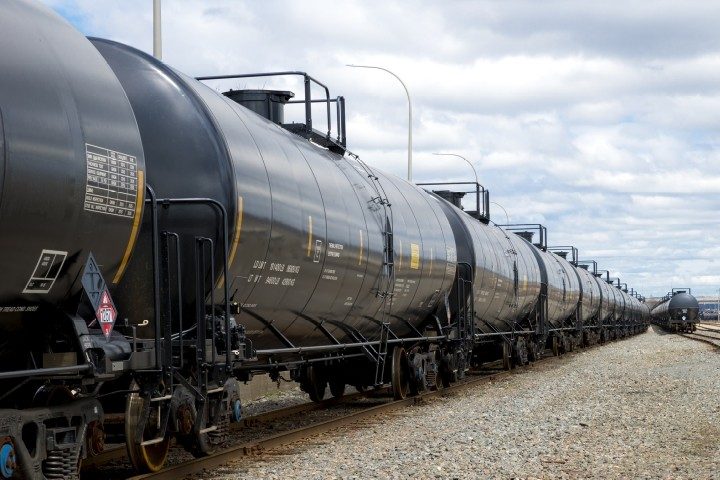
It’s not discussed much, but the United States’ energy independence is an amazing phenomenon. Perhaps I’m dating myself, but I’m old enough to remember (it was only the ’90s) when accepted as a given was that we’d have to send greenbacks to the Mideast and enrich sheiks and terrorism-supporting regimes. But then came hydraulic fracturing’s (fracking’s) widespread use in 2003 and horizontal drilling, and the rest is history:
We became energy independent in 2019 for the first time in 62 years.
This progress is now threatened, however. Low-energy himself, Joe Biden is not a fan of this energy boom. On the campaign trail he vowed to end fracking (Forbes claims he “misstated” his position) and, spitting into the wind, promised “a 100 percent clean energy economy and net-zero emissions” in a few decades. And he has already made good on another disastrous promise: rescinding a permit to construct the $9 billion Keystone XL pipeline.
(To be accurate, do note that all this is the handiwork of Biden’s hard-left handlers; he’s a puppet now.)
While this measure itself may not reduce our energy production, terminating the pipeline has long been a pet project of environmentalists. So while it’s “Goodbye, 11,000 more jobs,” it’s “Hello, greener America,” right? Not really.
As American Thinker wrote Saturday, “Instead of getting more environmentally friendly, the carbon footprint from that oil will be increased substantially because it will be shipped by trucks and trains above ground instead of through underground pipe. It is also much less safe and efficient: shipping by trucks and trains means more accidents — and an increased human cost. What sheer brilliance! I thought all of Biden’s decisions were going to be based on facts and science.”
Moreover, looking at the even-bigger picture, the Thinker writes that
demand for ships that specialize in building and servicing wind farms is growing. What is the carbon footprint of these ships that will be powered by oil? The oil will clearly have to come from sources other than the U.S. — such as Russia or Iran, since we are eventually going to stop producing oil over here if Biden has his way, intentionally destroying millions of jobs.
How will Biden maintain the current Trump vaccination level of one million per day without using planes, trucks, cars, and trains powered by oil? I hope the Biden administration calculates the carbon footprint of all this, since that is its main concern.
As an aside, note here that “carbon footprint” is an unscientific propaganda term. Calling CO2 “carbon” is like labeling H2O “hydrogen.” These things matter. Sodium (Na) and Chlorine (Cl) are both toxic, but combining the two gives us man’s most popular seasoning: salt (NaCl).
Speaking of poisons, CO2 is not one. It’s a gas necessary for life on Earth; plants couldn’t photosynthesize without it. Thus is it unsurprising that during the dinosaurs’ age of lush, green foliage, CO2 levels were five to 10 times today’s; or that botanists pump the gas into greenhouses. Nonetheless, though, the Left either hates it — or loves it as a propaganda tool. But I digress.
What American Thinker points out is another example of that which famed French economist Frédéric Bastiat called “What is Seen and What is Not Seen.” It’s easy making a case for a position or measure if you consider only its alleged pros but not its cons, which often are unseen. XL pipeline opponents make this mistake.
Fossil fuel’s detractors do this, too, ignoring or being oblivious to its elimination’s effects. Consider, for instance, that petrochemicals “derived from oil and natural gas make the manufacturing of over 6,000 everyday products and high-tech devices possible,” Energy.gov informs.
“Major petrochemicals — including ethylene, propylene, acetylene, benzene, and toluene, as well as natural gas constituents like methane, propane, and ethane — are the feedstock chemicals for the production of many of the items we use and depend on every day,” the site continues.
On Energy.gov’s list of approximately 200 items derived from fossil fuels are tires, hearing aids, heart valves, house paint, pharmaceuticals, toothbrushes, vitamin capsules, refrigerator linings, motorcycle helmets, laptops, life jackets, clothes, pantyhose, parachutes, telephones, and even what leftists require for their bird-killing wind farms: wind turbine blades.
Moreover, America could not sustain 328 million people, or the world seven billion people, without massive energy supplies, and nothing on the horizon can replace fossil fuels. In fact, eliminating them — as, for example, the Left’s Green New Deal prescribes — would be disastrous.
As former Greenpeace figure Patrick Moore put it in 2019, if the Green New Deal were instituted globally, it could “result in the death of nearly all humans on Earth.” But before they died their miserable deaths, he pointed out, they’d cut down every tree for fuel and kill every animal for food.
The reality is that the Western lifestyle is not a disease, but the cure. This is why the freest, most prosperous nations — not Third World or despotic ones (e.g., China) — have the cleanest environments. I explored this in my 2020 essay, “Why the Greentopians Would Destroy the Earth.”
Of course, we’d all love a viable, clean, and economical alternative energy source. But when one becomes feasible, the market will make it a reality; it won’t have to be imposed by government.
As to the greentopian schemes, they’d only bring tyranny. So don’t worry about a “carbon” footprint, but the kind that results from, to quote 1984, “a boot stamping on a human face — forever.”



